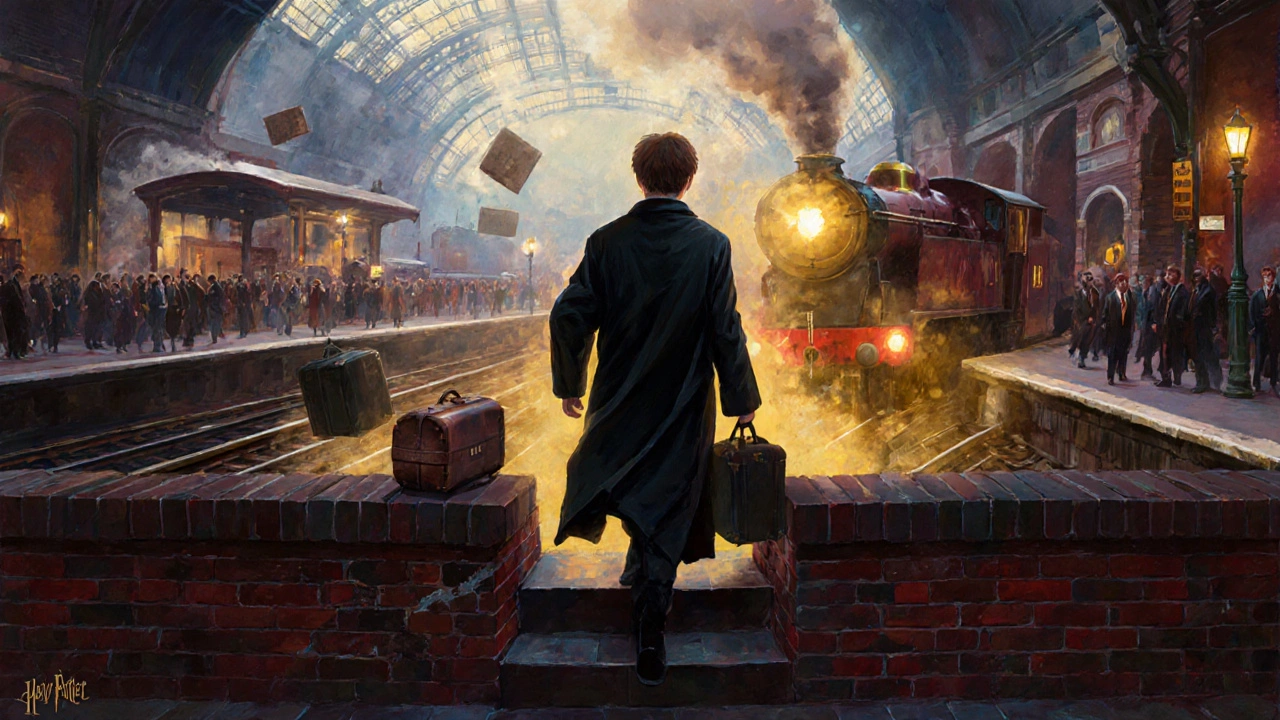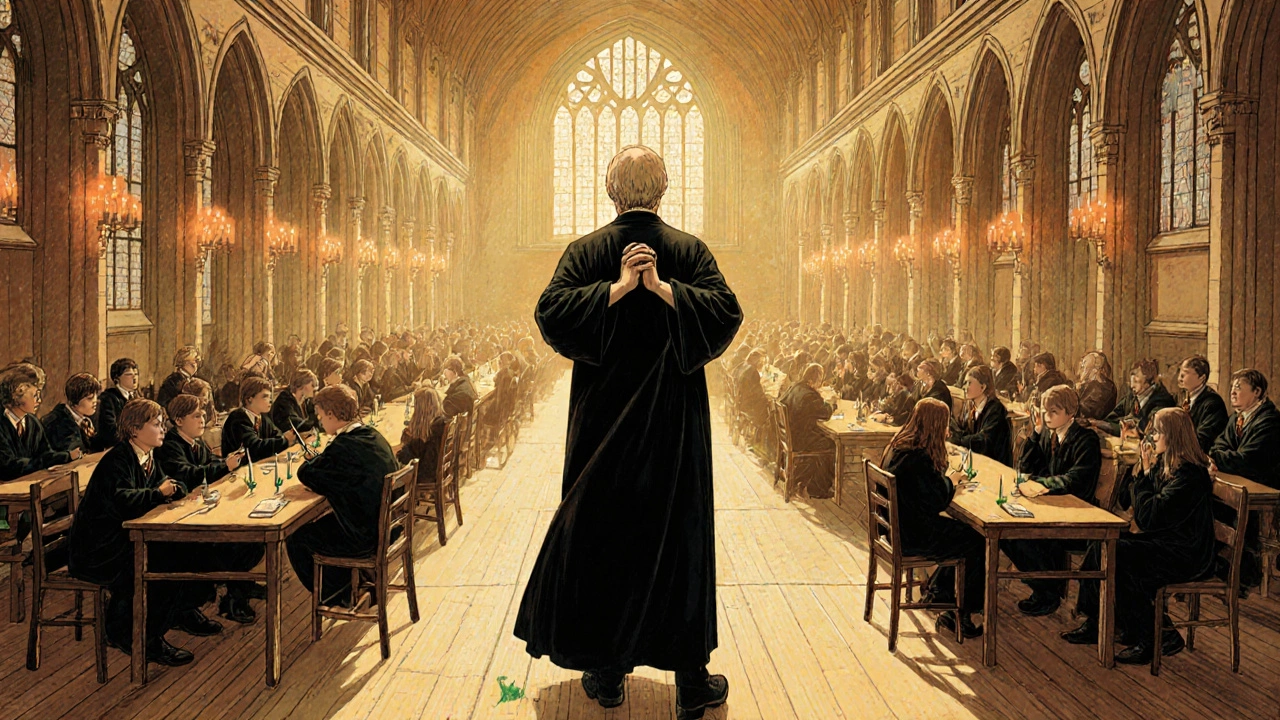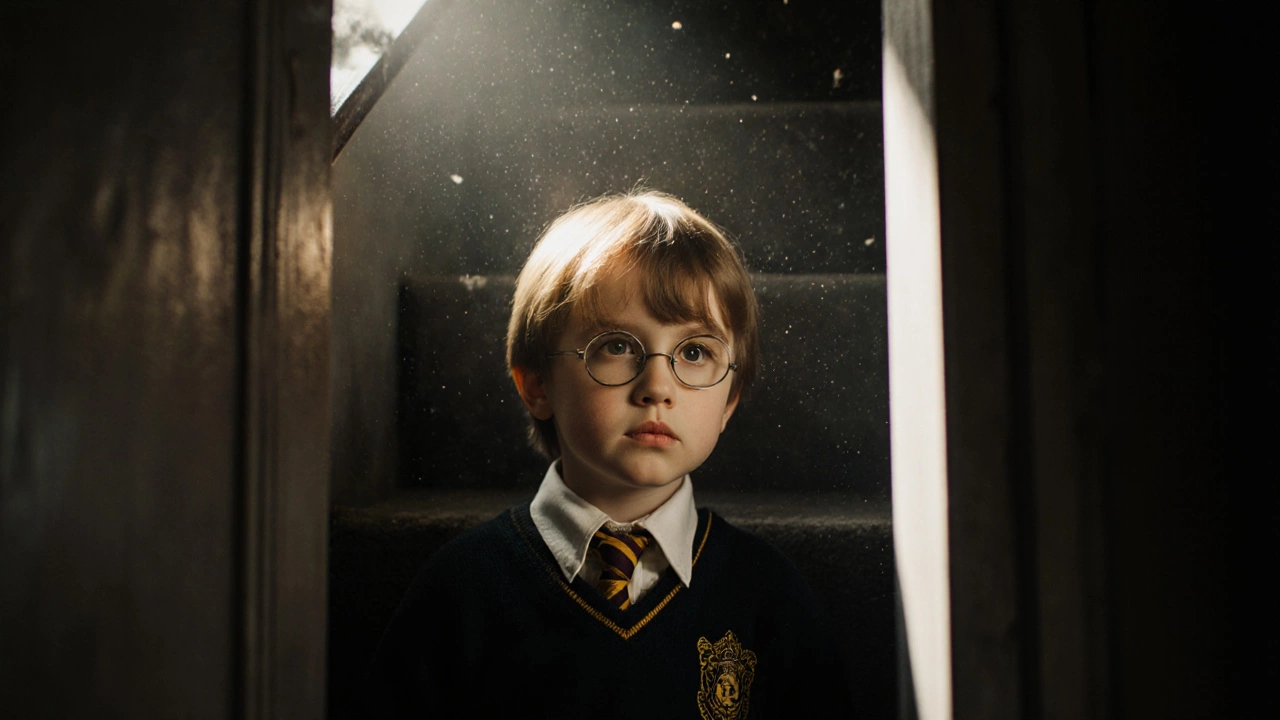Quick Summary
- Harry Potter follows the classic bildungsroman arc: orphaned child, personal trials, moral autonomy.
- The series mirrors key stages identified by scholars: loss, quest, self‑realisation, and societal integration.
- J.K. Rowling weaves magical elements without breaking the coming‑of‑age framework.
- Compared to canonical bildungsromans like Great Expectations, Harry adds a communal battle against evil.
- Understanding the novel as a bildungsroman enriches literary discussion and classroom teaching.
What Is a Bildungsroman?
A Bildungsroman is a literary genre that tracks a protagonist’s psychological and moral growth from youth to adulthood. Scholars such as Wilhelm Dilthey describe three core phases: (1) loss or departure from a familiar world, (2) a period of wandering and self‑discovery, and (3) a return, often with a new societal role. Classic examples include Great Expectations, Jane Eyre, and The Catcher in the Rye.
The structure is not limited to realistic settings; magical or futuristic backdrops can still serve the genre as long as the internal development remains central.
Harry Potter in a Nutshell
When we talk about Harry Potter is a seven‑book fantasy series written by J.K. Rowling, we usually focus on the epic battle against Voldemort. Yet the series also charts Harry’s evolution from a frightened boy living under the stairs to a confident young adult who makes difficult ethical choices. Each book marks a distinct stage in his growth, aligning neatly with the bildungsroman model.
Beyond the protagonist, the series presents a cast of secondary characters-Hermione, Ron, Neville-who each undergo their own journeys, reinforcing the theme of personal maturation within a community.

How Harry Potter Meets Bildungsroman Criteria
- Loss and Departure: The series opens with Harry’s orphanhood and his removal from the Dursleys, a clear break from his familiar, oppressive world.
- Wandering and Quest: From Platform 9¾ to the Forbidden Forest, Harry repeatedly confronts external challenges that force internal reflection-e.g., the Mirror of Erised confronting his desire for family.
- Moral Testing: Each year presents a moral dilemma, from choosing between loyalty to friends and following the rules (book 3) to deciding whether to spare a dying enemy (book 7).
- Return and Integration: By the final book, Harry accepts his role in the wizarding world, not as a hero wielding power, but as a responsible member who helps rebuild the community.
These steps echo the three‑phase model of the bildungsroman, confirming that Harry’s story is more than a simple adventure-it’s a structured path to self‑realisation.
Key Milestones in Harry’s Development
- Year 1 - Identity Discovery: The revelation that he is a wizard forces Harry to re‑evaluate his self‑concept.
- Year 2 - Confronting Fear: The basilisk episode teaches him to trust his instincts and allies.
- Year 3 - Facing Loss: Sirius’s death pushes Harry into grieving, fostering emotional depth.
- Year4 - Moral Ambiguity: The Triwizard Tournament exposes him to political manipulation and the cost of fame.
- Year5 - Rebellion: Forming Dumbledore’s Army shows leadership and independent moral judgment.
- Year6 - Understanding Legacy: Horcrux research forces Harry to grapple with his own mortality.
- Year7 - Sacrificial Choice: Willingly walking into the forest demonstrates ultimate self‑sacrifice, a hallmark of mature adulthood.
Counterarguments: Why Some Say It’s Not a Bildungsroman
Critics argue that the series’ heavy reliance on external magical conflict overshadows internal growth, making it more of a heroic quest than a coming‑of‑age tale. They point out that the plot often hinges on prophecy and destiny, which can diminish agency-a key element of traditional bildungsromans.
Another objection is the episodic nature of the books; each installment resets the stakes, potentially fragmenting the continuous development required by the genre.
While these points hold weight, they overlook how the magical framework serves as a metaphor for real‑world challenges. The prophecy, for instance, mirrors societal expectations placed on youth, and the episodic structure mirrors the uneven pace of personal growth.

Why the Label Matters
Classifying Harry Potter as a bildungsroman opens up new pedagogical pathways. Teachers can compare the series with classic novels, discussing how contemporary fantasy reshapes age‑old themes. Readers gain a deeper appreciation for the narrative’s psychological layers, not just its plot twists.
Moreover, recognizing the genre helps publishers market the books to audiences seeking thoughtful coming‑of‑age stories, expanding its reach beyond pure fantasy fans.
Comparison Table: Harry Potter vs. Classic Bildungsromans
| Work | Protagonist Age (Start) | Central Conflict | Setting | Primary Theme |
|---|---|---|---|---|
| Harry Potter | 11 | Good vs. Evil (Voldemort) | Wizarding World (Britain) | Self‑realisation through sacrifice |
| Great Expectations | 7 | Social ambition vs. moral integrity | Victorian England | Identity formation under class pressure |
| Jane Eyre | 10 | Independence vs. societal expectations | 19th‑century England | Self‑respect and moral autonomy |
| The Catcher in the Rye | 16 | Alienation vs. authenticity | Post‑war America | Search for genuine connection |
Frequently Asked Questions
Does every fantasy series automatically count as a bildungsroman?
No. A story must centre on the protagonist’s inner growth and moral development, not just external adventure. If the narrative uses magical elements as symbols for personal change, it can qualify.
How does Harry’s relationship with Dumbledore fit the bildungsroman model?
Dumbledore acts as the mentor figure, guiding Harry through the ‘wandering’ phase. Their dynamic showcases the transfer of wisdom, a common trope in coming‑of‑age narratives.
Is the series still a bildungsroman despite the presence of prophecy?
Prophecy can be read as an external pressure that forces the hero to confront destiny, thereby sharpening personal choice-a core element of the genre.
Can the later books be studied independently as bildungsroman examples?
Each book captures a distinct developmental stage. For instance, Order of the Phoenix focuses on rebellion and identity formation, making it a self‑contained coming‑of‑age case study.
What classroom activities can illustrate the bildungsroman aspects of Harry Potter?
Students can map Harry’s journey onto the three‑phase diagram, compare his growth with that of Pip (Great Expectations), and write reflective essays on how magical trials mirror real adolescent challenges.

